| 1 | Eastern stripe-bellied sand snake |
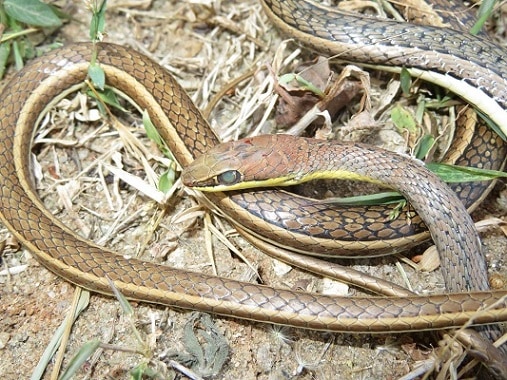
With no arms or legs, snakes need to get as much mileage out of their tails as they possibly can. Different snakes have evolved different strategies. The tree boas have prehensile trails to dangle securely from branches, while rattlesnakes favour intimidation, with bright segmented scales that bash together musically.
However, another chunk have evolved the ability to cleanly detach their tail, one being the eastern-striped bellied sand racer (Psammophis orientalis). This species measures up to 1.4 metres, and lives in South Africa, Mozambique and Zimbabwe, favouring moist savannahs and sparse woods. They’re an active snake which is always slithering around and investigating nooks and crannies curiously. Unfortunately, this means that they’re highly visible to bird predators. When eastern sand racers are scooped up in steely bird talons, they have the option to bite them painfully, thrash wildly, or release a foul snake smell. But the last resort is to sever their own tail, so that they can escape the bird’s grip. Psammophis orientalis achieves this with a sudden twist on its axis, while still gripped securely.
This normally removes the latter half of the sand racer’s tail, which will be missing for the rest of their lives, but gives them a ticket to safety that the bird isn’t expecting. Many are spotted missing tails in savannahs, having survived one of countless unobserved battles. A 1977 study found the rate of missing tails in the wild to be 45.9%. Several other family members have this ability, including the hissing sand snake (P. sibilans) and Karoo sand snake (P. notostictus).
| 2 | Yellow belly snake |
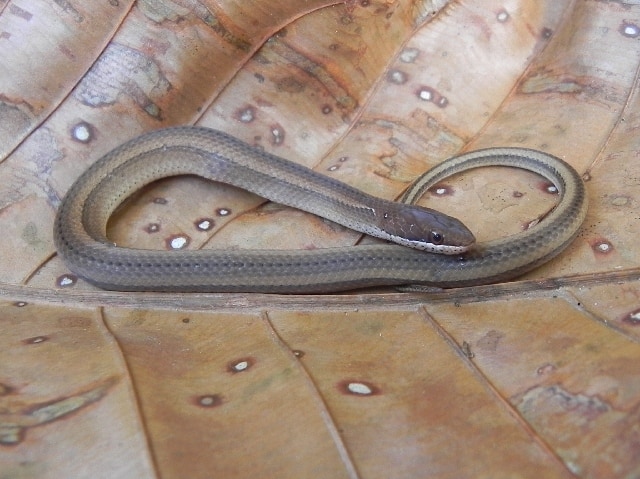
The yellow belly snake (Coniophanes fissidens) is a fairly mysterious snake that resides in the humid forests of southern Mexico and central America, sometimes near mango trees. After 160 years, its exact diet breakdown is still poorly mapped, as is its daily routine, with rainbow ameivas and earthworms confirmed to be included. However, one thing European explorers noticed from the getgo was that a large proportion had tails missing. Some were long, swishy and majestic, but others were mere stumps. More recently, a 1992 survey found that 60% of yellow belly snakes had their tails missing.
This is because they have the ability to detach them, a key survival feature in the teeming forests they inhabit. They have decent protection thanks to their camouflage and vicious bite, but if these fail, releasing their tail is their final barrier of defence. Like others, this barely bleeds and continues to twitch for a while.
Yellow belly snakes live on branches, and their favourite place to rest is between two massive overlapping rainforest leaves. Here they can relax, and watch the jungle go by in peace, while listening to the soft pitter patter of rain on the leaf above. But there’s sometimes one cunning bird which has a line of sight where others don’t. In this cataclysmic chain of events, a detachable tail is the only safeguard.
| 3 | Red-headed glasstail |
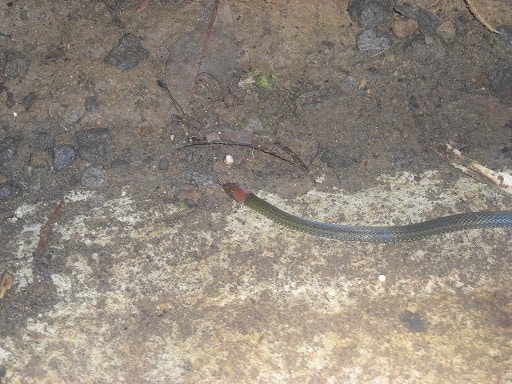
The red-headed glasstail is a common tail detacher. It lives in the forests of Panama, and has mild venom which is too weak to take down birds, even if it penetrated their feathers. If in mortal peril, seconds from death, the red-headed glasstail snake will cleanly detach its tail. The bird’s grip is loosened, and escape is possible.
This also affords them the precious gift of time, a few seconds where the bird is utterly confused by the tail still in its grasp, and fails to notice that its real prize is disappearing into the bushes. In the jungle, the gap between survival and death can be measured in mere milliseconds.
That said, this trick is mostly useless against fellow snakes. One top snake eater in Panamanian forests is the mussurana, AKA Clelia clelia. Their tactic is to creep up slowly behind, and leap forward, restraining them in a sudden jail cell of coils. There’s very little chance that the tail would be caught and nothing else. Likewise for the serpent-hungry coral snake (Micrurus family); this is venomous, and after one sudden bite, the toxins will already be flowing through the glasstail’s body.
| 4 | Olive forest racer |
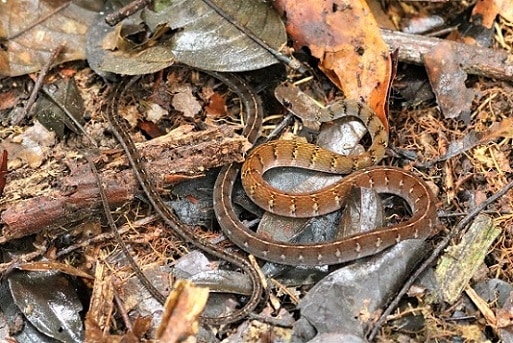
This frog-eating species likes Ecuadorian and Peruvian forests, including trails frequented by humans, which are probably the biggest bird base around. Olive forest racers measure up to 118.3cm, and primarily stick to the ground, climbing trees sometimes, and investigating small pools where their humming frog prey heavily congregate. Olive forest racers lack venom, and therefore have had to evolve different defensive strategies, one being severing its own tail, as a greedy bird grabs an initial hold.
Like all snakes, the olive forest racer’s tail cannot grow back, leaving them stumpy, yet happily alive to tell the tail. This species also utilises camouflage against the forest floor, but a snake’s tail tip is pretty far from its head and it’s hard to control it at all times. The smarter snakes manage to chart a course through leaf litter or forest mulch, but there’s always going to be times when there’s less room than they anticipate, and their tail is poking out unexpectedly. Sometimes, it’s too late to dash to a new shelter, and a hawk on a nearby branch cocks its head up with sudden interest. The snake is in a dead end, and severing its precious tail might be its last hope.
| 5 | Olive marsh snake |
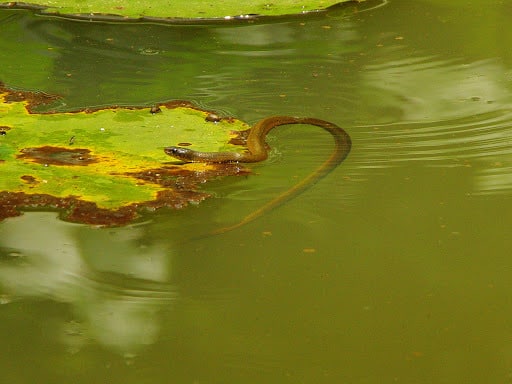
The olive marsh snake dwells in the waterways of central Africa, weaving between lily pads amid rotting swamp juice. They’re assumed to dine mainly on frogs, which they acquire through an extremely fast burst of swimming. With less tree canopies protecting them, olive marsh snakes are easy pickings for bird predators divebombing from the sky, particularly heron and storks.
If there’s no other option, the olive marsh snake will separate its tail without hesitation, with no thought for the future, instinctively understanding that it’s better to have a stumpy life than no life at all. Members of the Natriciteres family have such fragile tails that they break off in scientists’ hands without them doing anything. According to a 1987 study, 43.6% of olive marsh snakes observed had tails missing.
Olive marsh snakes can also bite their bird nemesis, but sometimes, the angles are plain wrong. If a bird grabs the centre of their back, then can easily twist their neck around and sink their fangs in, but if they’re seized by the tail, it’s far trickier. Before they know it, they could be dangling from a bird’s talons in mid-air, 5, 10 or 20 metres above ground. A fall from that height would be fatal even if they managed to wriggle free. That’s why severing their own tail is the costly yet logical option.
| 6 | Columbian longtail snake |
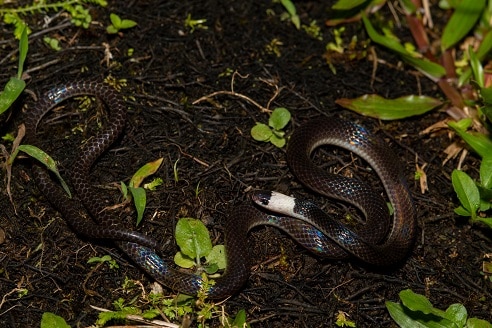
The Colombian longtail snake (Enuliophis sclateri) hangs out in low lying forests up to 1650 metres in altitude, also in Panama, Honduras and Costa Rica. They lack venom, and so resort to subtler methods. They often play dead by flipping onto their back, showing off their bright white bellies.
They’re also able to detach their tail instantaneously. This is deployed only in serious emergencies, when only the tail is being gripped directly. Like with eastern ribbon snakes, this tail keeps wriggling for several seconds after it’s been detached. A bird might be completely fooled by the deception, flying off with the tail in its talons, triumphantly carrying its soon to be meal. Only when they bite in to feel a hard crunch would they realise that they’ve been fooled, with just thin scraps of meat available to scrape out.
The bird might then fly back to the original location, only discover with a fury that the Colombian longtail snake is long gone. Meanwhile, more cunning birds might not be fooled at all, instantly sensing that they’re not carrying a fully fledged snake meal.
| 7 | Rio tropical racer |
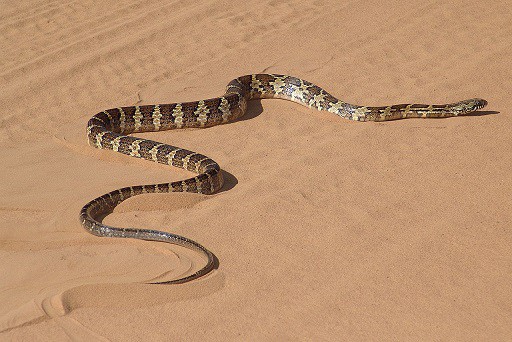
The Rio tropical racer is one of the most frequent tail detachers, with one survey estimating that 46-52% have the lower portions missing. They have plenty of tail to start with, as this is a long and whippy species which can reach 2 metres. The tail can separate so suddenly that it takes birds by surprise, allowing them to slither to freedom. It’s a warzone where they live, with eagles, owls and hawks all hoping for a snake snack.
The Rio tropical racer is a widespread South American species which sticks to pristine forests, in Brazil, Paraguay, Bolivia and Colombia. Their hunting style involves rapid charging, at natural breakneck speeds, followed by an accurate pounce. Their defensive strategy involves frenzied biting, fleeing at high speeds, and of course severing their own tail.
One unanswered question is how detaching a tail feels, whether it’s agonisingly painful or the equivalent of cutting a fingernail. We may never know, as snakes aren’t able to tell us. Likewise, it’s mysterious as to whether tails simply break off, or whether the Rio tropical racer snake or other species can consciously control it. The connective scales might be naturally fragile, or an emergency instinct in the snake’s brain might activate after danger signals reach critical levels.
| 8 | Guatemala neckband snake |
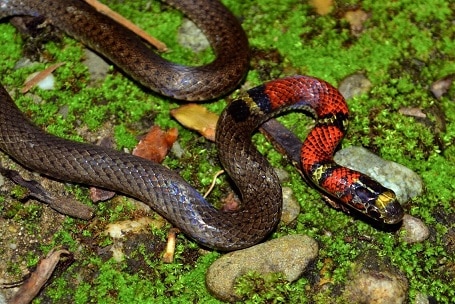
Most snakes would rather not lose their tail, but if the alternative is a frenzied burrowing owl, then there is no alternative, particularly when the owl looks way larger from the snake’s perspective, probably the size of a large cow for a human. The Guatemala neckband snake (Scaphiodontophis annulatus) is a tail detacher from Central America, which lives in pristine forests with dense undergrowth. It’s greatly feared by brown forest skinks, its main prey, yet those reptiles have no idea that the neckband snake has enemies it fears itself.
This species has so much fear for eagles and hawks that it will snap off its own precious tail to avoid their clutches. It does so cleanly and efficiently. Not only do Scaphiodontophis annulatus lose little blood, but they suffer no shock to their system, no stunned expression – they just slither off without interruption.
A study found that 70% of Guatemala neckband snakes in one forest had their tails missing. Exactly how many millions of years ago this trick began is unknown. The more logical thing would have been for snakes to evolve an extremely spiky tail which is agonising for birds to touch. This tail would deter birds without the snake even doing anything, like the spikes of a hedgehog. Somehow though, nature never managed this feat. It’s possible that a super spiky tail would get snagged on undergrowth constantly and prevent them from moving forward smoothly. Instead, they went down the painful route of snapping their tails off.
| 9 | Eastern ribbon snake |

The eastern ribbon snake inhabits the northeast USA, including Ohio and Pennsylvania. They love water, particularly small streams and lakes in the grassy countryside. They possess an extremely mild venom, and prey largely on small fish. This snake particularly loves to climb riverside trees to bask in the sunlight, giving them a miraculous ability to escape flash floods. Less positively, it makes them easy pickings for watchful bird predators. Eastern ribbon snakes can detach their tail, and do so far more commonly than their garter snake cousins.
One cool feature is that the stump barely bleeds. It might leave a small speckle of blood, but not the spurt from a normal animal. The wound seals itself instantly, so that the eastern ribbon snake can carry on. This hints that the power evolved a relatively long time ago, if it’s become so refined. There are costs though. A study found on their garter snake relatives found that those with missing tails were significantly poorer swimmers.
This isn’t the eastern ribbon snake’s only tail trick. They can also shift warmth from their tails to their bodies to preserve warmth, particularly in November.
| 10 | Checkered keelback |
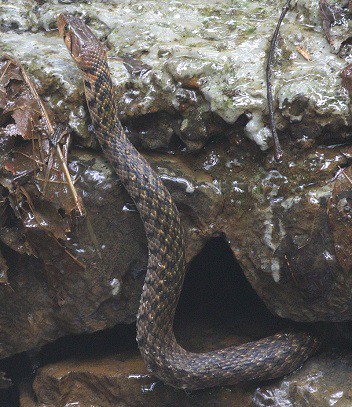
The checkered keelback is a mildly venomous snake which dwells in the marshes of India and Bangladesh, living a humble lifestyle and posing no threat to humanity. They’re much more concerned with dodging alligators and hawks then they are with attacking innocent fishermen. They’re experts at ducking below the surface, hiding in the murky depths, but their reactions aren’t always fast enough. A costly, yet unavoidable backup is shedding their own tail. This is followed by a rapid dash to safety, leaving the stunned bird thwarted in its apparent moment of triumph, in just a few seconds.
The big downside to this power is that snakes can only use it one. Once the tail has snapped off, that’s it, it won’t regrow, and that form of defence is closed off. The next time a bird swoops in with its talons outstretched, the checkered keelback’s chances of survival will be smaller. They’ll have to hone their skills at thrashing wildly, or biting instead.
It’s a harsh world that the checkered keelback lives in. It’s a wonder they don’t go extinct, but they compensate with a gigantic egg clutch of up to 70. Checkered keelbacks can reach 1.75 metres and primarily prey on fish and frogs.
